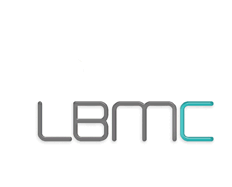About the laboratory

The LBMC aims to characterise the molecular bases underlying the organisation and functioning of cellular processes in normal and pathological conditions. The laboratory develops genetic and quantitative analyses of biological systems, systems biology and modelling approaches.
Teams strive to integrate different aspects of cellular life: cell division, architecture, proliferation and differentiation, tissue integration, regulation of gene expression, epigenetics, structure and interaction of biomolecules. A variety of experimental models are used in our research, including budding and fission yeasts, Drosophila, C. elegans, rodents, chicken as well as murine and human cells.
research axes
- Quantitative approaches to genome dynamics and expression
- Cellular and molecular pathological processes
- Systems biology of signaling and developmental cellular processes
KEY WORDS
Cell division and differentiation, apoptosis, oncogenesis, stress response, evolution, genetics, molecular interactions, genomic structure and expression, epigenetics, splicing, RNA and protein degradation, biological and molecular modelling, systems biology, bioinformatics, biomathematics and biophysics.
History
The LBMC was founded by Pr J. Daillie in 1987 at the opening of the Ecole Normale Supérieure de Lyon with the aim to cover most of life science disciplines in order to have within this institution the competences necessary for its two core missions: research and teaching.
From the beginning, the LBMC has covered diverse topics based on the use of various models from yeast to human cells. The establishment of various model systems within the LBMC was carried out with the specific desire to ensure complementarity in research themes, thereby covering the major fields in eukaryotic cell biology (with the exception of plant biology): gene expression, biology of the nucleus, epigenetics, genomics, signalling, control of proliferation, differentiation, apoptosis and senescence, cell cycle, virology, endocrinology, immunology, neurobiology, evolution, development and oncogenesis. A new research structure could emerge when one of the topics developed within the LBMC reached a sufficient critical mass. An example is the departure of the immunology teams (C. Rabourdin-Combe; J. Marvel) to create an INSERM unit on the premises of the ex- Lyon Pasteur Institute (tour CERVI). This role of "nursery" continued through the departure of the Lyon Institute of Functional Genomics (IGFL) founded by J. Samarut, a former LBMC director until 1997. This institute, previously hosted by the LBMC, moved into a new building in 2012. Another example of an institute that has been initiated by a former LBMC team is the IRCAN (Institute of Research on Cancer and Ageing of Nice) created in 2010 by Eric Gilson, also a former director of the LBMC. And in 2016 the INMG (Institute Neuro-Myo-Gene) was created at the initiative of Laurent Schaeffer, in the Lyon Est faculty of medicine to develop a new research community dedicated to molecular and cellular neurobiology, and biology of the neuromuscular system.
Since its creation, the LBMC has been administered as a “unité mixte de recherche“ (UMR), supported by the ENS de Lyon and the Centre National de la Recherche Scientifique (CNRS). The University Claude Bernard Lyon 1 (UCBL) and the Lyon Hospices (HCL) also supported the laboratory, in particular through the presence of two joint-appointments within the LBMC and several transversal projects.
